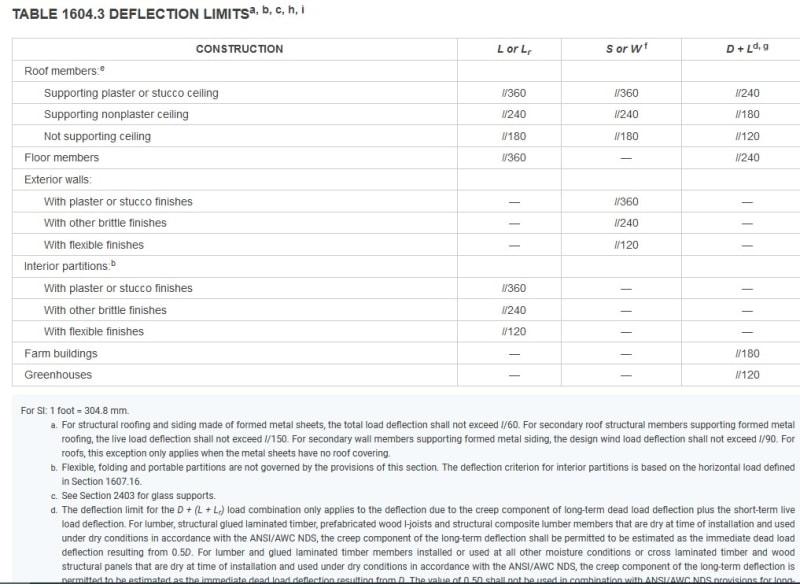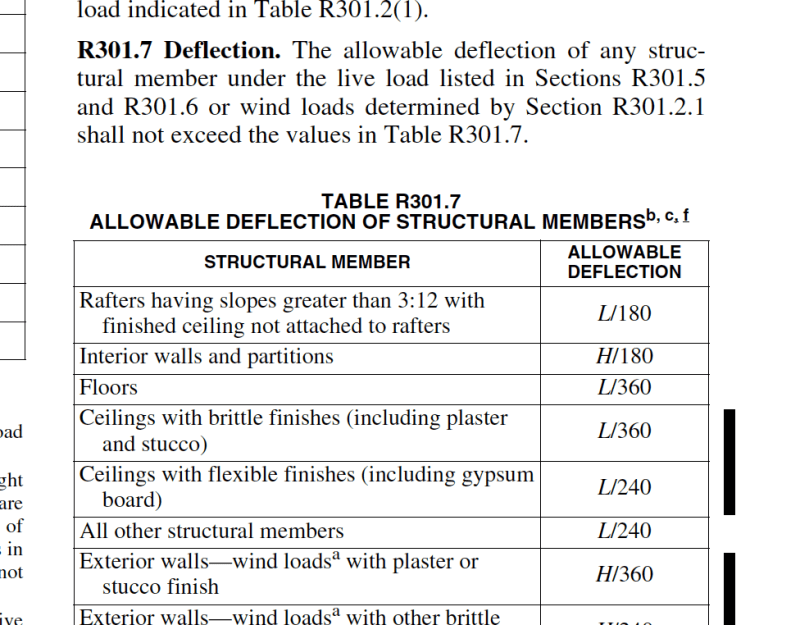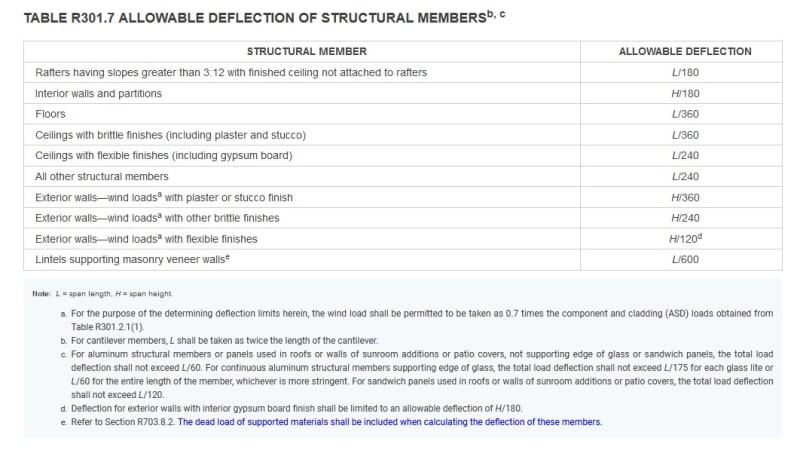SinStrucEng
Structural
We have a rafter framed roof with a ridge plate (rather than ridge beam). There are few collar ties, but the rafter ties (which act as the ceiling joists) span in the direction opposite of what I would expect (they are perpendicular to the collar ties and parallel with ridge). There is a knee wall at around 1/2 span of the rafters, which simply sits on the ceiling joists below.
What is stopping the exterior walls from splaying out? Exterior facade is brick and in great shape. Structure is from the 1970s. We were hired to design a new staircase/opening into the attic so that the space can be used for storage and whatnot.
My intention is to cut the existing ceiling joists back a touch (36" or so) from the CMU firewall to fit a staircase from the second floor and to simultaneously upgrade the joists (either sister or replace with new of a different size) to make them adequate to support the expected dead/live loads. Current ceiling joists are only 2x6 at 16" so they will become either 2-2x6 at the least or maybe 2x8, 2x10, etc (this analysis isn't complete yet).
My main worry originally was that by cutting or removing the ceiling joists, you'd compromise the roof. But it appears that these joists are literally only supporting the ceiling and insulation, and don't tie the roof together at all... They're even lapped over interior partition walls. What am I missing? Is this roof magic? We live in a heavy snow area too.
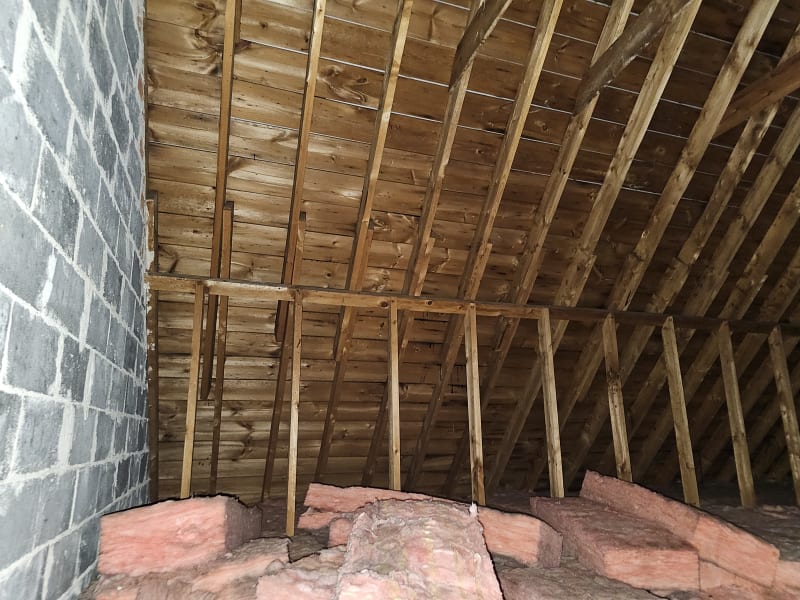
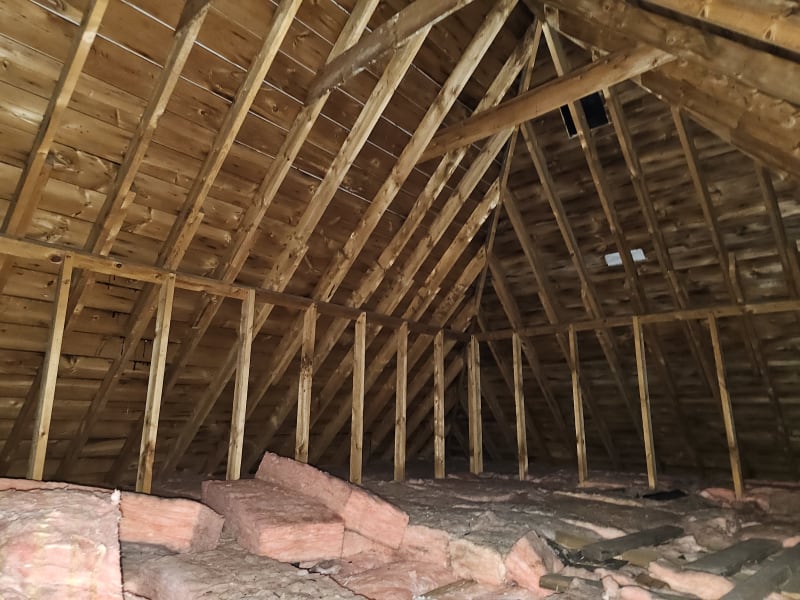
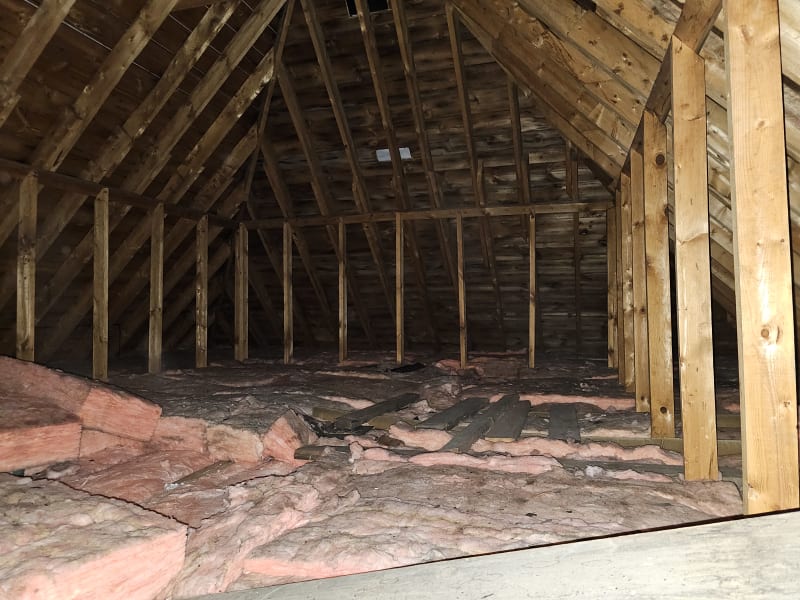
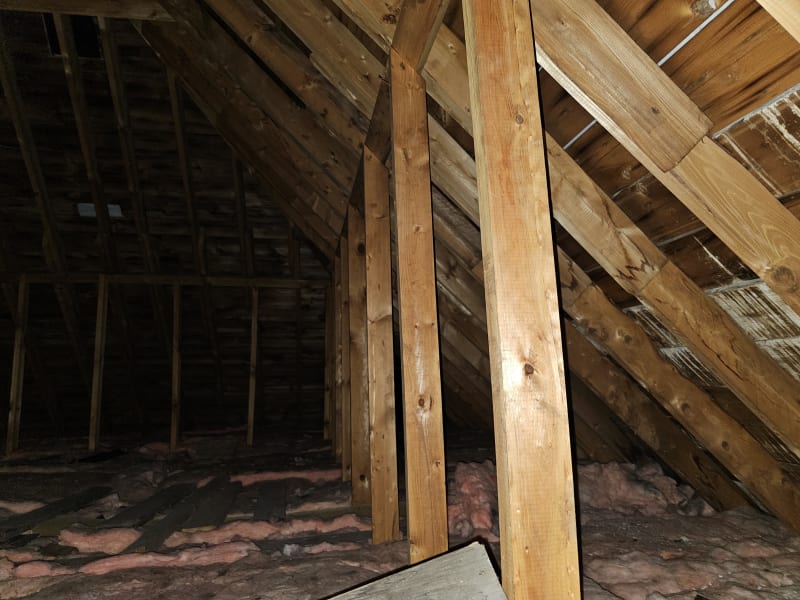
What is stopping the exterior walls from splaying out? Exterior facade is brick and in great shape. Structure is from the 1970s. We were hired to design a new staircase/opening into the attic so that the space can be used for storage and whatnot.
My intention is to cut the existing ceiling joists back a touch (36" or so) from the CMU firewall to fit a staircase from the second floor and to simultaneously upgrade the joists (either sister or replace with new of a different size) to make them adequate to support the expected dead/live loads. Current ceiling joists are only 2x6 at 16" so they will become either 2-2x6 at the least or maybe 2x8, 2x10, etc (this analysis isn't complete yet).
My main worry originally was that by cutting or removing the ceiling joists, you'd compromise the roof. But it appears that these joists are literally only supporting the ceiling and insulation, and don't tie the roof together at all... They're even lapped over interior partition walls. What am I missing? Is this roof magic? We live in a heavy snow area too.





